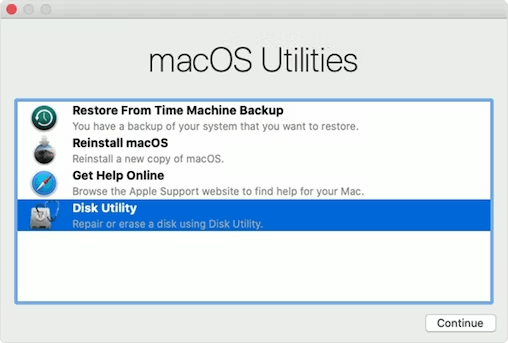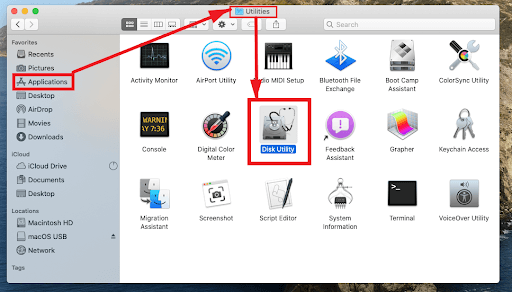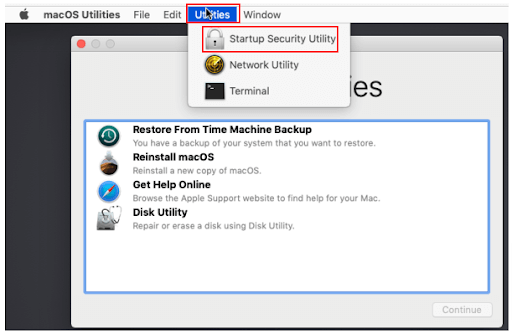macOS Monterey is here. But not everyone was able to upgrade to it due to system compatibility and other constraints. Hence, sticking with macOS Big Sur was the only option left. macOS Big Sur, though a stable operating system, might bump into unexpected problems, fail to run old software/hardware, or may not be speedy enough to cater to user requirements, instigating many users to downgrade from macOS Big Sur to Catalina. Are you also one of those users wanting to downgrade macOS, but are unsure about how to do it? If yes, this article is the ultimate guide you need. Through this typewritten note, we guide you through some quick and easy ways to downgrade Big Sur without losing data. Let us begin with them without any further dilly-dallying.
Simple and Quick Methods to Downgrade from macOS Big Sur to Catalina
You may follow the methods elucidated below to downgrade macOS from Big Sur to Catalina. Note: Before following the below methods, you should back up your data to be on the safer side, and minimize the risk of losing crucial files. You may back up your data using Time Machine, copy files to another location (such as a USB drive), clone your Mac’s hard drive, or use iCloud to store important files.
Method 1: Use Time Machine to downgrade from macOS Big Sur to Catalina
It is a simple process to downgrade macOS to Catalina using Time Machine if you used this utility to create a data backup. You can accomplish this task in two easy steps shared below.
Step 1: Erase all data stored on your device’s system disk
The first step to downgrade from Big Sur to Catalina through Time Machine is removing all data present on your Mac’s hard drive. Below is how you may do it.
Turn off your Mac, erase, and format it.Power on the device while pressing the Command+R buttons as it boots up.Select Disk Utility from the window of Mac Utilities.Continue and then select Startup Disk. Choose Erase and then select the APS Format. Select GUID Partition Map. Lastly, Confirm the above actions.
Also Read: How to Fix WindowServer High CPU Usage on Mac
Step 2: Restore your Mac with Time Machine
Finally, you may restore all data from Time Machine backup to downgrade Big Sur without losing data. The following steps will help you do it.
Restart your Mac.Press the Command+R buttons when the Mac is restarting to access Recovery.Choose the Time Machine backup disk from the next on-screen window.Select the most recently created backup.Choose the destination where you wish to store all contents from the backup.Select Restore and then Continue the process.Wait until Mac reboots into OS Catalina.
Method 2: Use a bootable USB drive to downgrade macOS without losing data
Though the process to downgrade macOS through a bootable USB drive is a little longer than doing it via Time Machine, you may try it by following these steps.
Step 1: Make a bootable USB drive for Catalina
Before downgrading from macOS Big Sur to Catalina, it is crucial that you create a bootable drive. Here are the detailed steps to do it.
Firstly, connect an external drive with a storage capacity of more than 12 GB to your Mac.Now, download the macOS Catalina’s copy through the App Store.Next, go to Applications on your Mac and choose Utilities. Select Disk Utility. Locate your external drive in the on-screen list, choose Erase, and select the Mac OS Extended format. After completing the above steps, open the Terminal using the Utility folder.Key in or copy the sudo /Applications/Install\ macOS\ Catalina.app/Contents/Resources/createinstallmedia –volume /Volumes/MyVolume command and press Enter. Input the admin password of your Mac.Follow the Terminal instructions and close it.Take the USB drive out of your Mac.
Step 2: Prepare your Mac to boot from the USB
If your Mac has a T2 chip, you need to make it ready to boot through USB. Here is the whole process to do it.
Restart your Mac and hold the Command+R buttons while it is restarting.Go to Utilities and select the Startup Security Utility option.Input the password of your firmware.Choose Next to allow Mac to boot via external media.Let the process wind up.
Step 3: Install Catalina through USB
In the above step, we created a bootable drive to downgrade from macOS Big Sur to Catalina. In this step, we are going to follow the below directions to use this bootable drive to install Catalina.
First of all, connect the external drive to your device.Go to your Mac’s System Preferences and choose the tab named Startup Disk. Choose the external drive as your startup disk.Select Restart and wait for your device to boot up in recovery mode.Choose the option to Install macOS and select Continue. Go along with the directions to complete the installation.Wait until your Mac restarts with macOS Catalina.
Also Read: Sync Contacts From iPhone to Mac
macOS Downgrade from Big Sur to Catalina: Completed Successfully
This article answered one of the most burning questions, how to downgrade from Big Sur to Catalina without a USB and with a USB. You may follow any method from the ones described above to get an older OS on your Mac. However, while downgrading to an older macOS, you should remember that Apple may not release security updates for old macOS in the long run. Hence, you should shift back to Catalina from Big Sur only if it is unavoidable to do so. If you have any other questions, concerns, or suggestions about this article, you may share them in the comments section.


